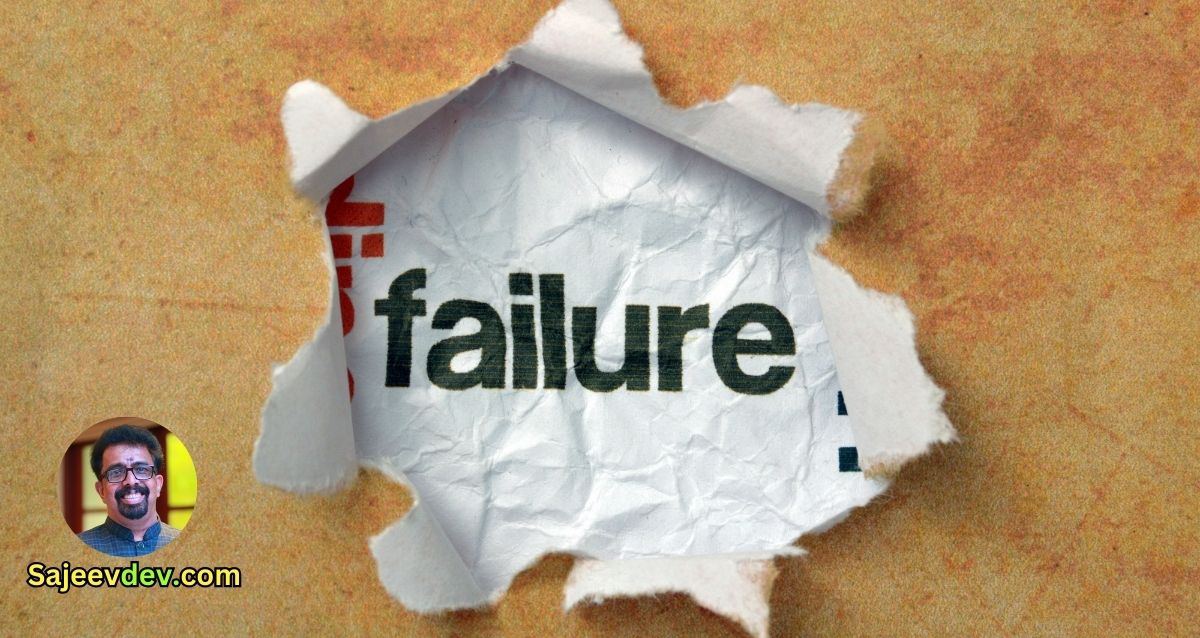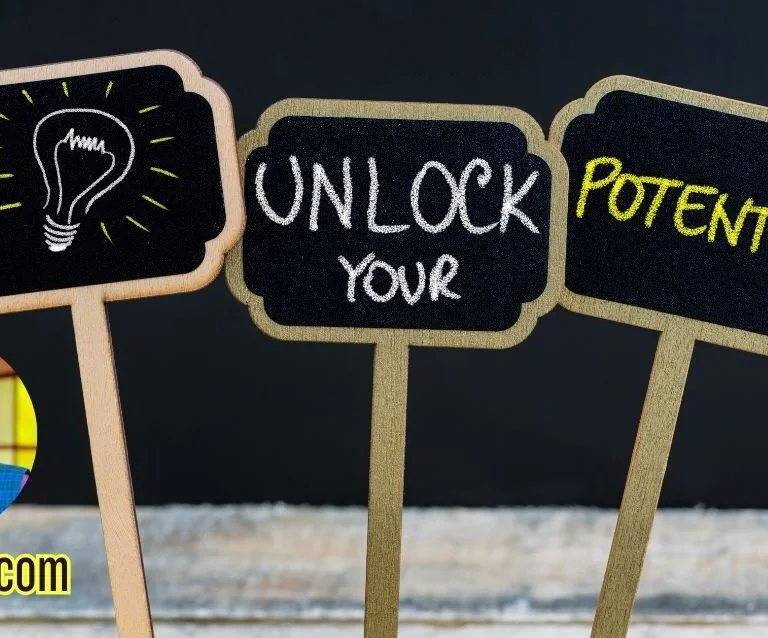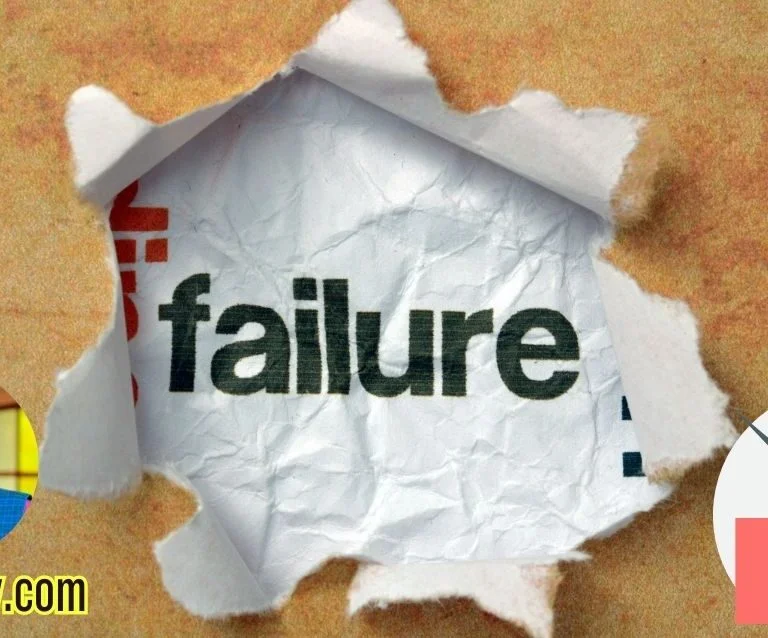The Traditional Perception of Failure
Traditionally, failure has been viewed as the antithesis of success, a terminus that signifies defeat and inadequacy. This conventional perception stems from societal norms and cultural pressures that place a high value on achievement and perfection. From an early age, individuals are often taught to avoid failure at all costs, fostering a mindset where errors are feared rather than seen as opportunities for growth. This fear can create a paralyzing effect, stifling innovation, creativity, and the willingness to take risks.
The conventional perspective of failure as something detrimental can significantly impede personal and professional development. When failure is regarded as a finality rather than a learning experience, it encourages a static approach to challenges. People may become reluctant to step out of their comfort zones, fearing the repercussions of falling short. This avoidance not only hinders individual progress but also stymies collective advancements in various fields.
However, an alternative viewpoint recognizes failure not as the end of the journey but as a pivotal element of the path to success. Embracing setbacks as stepping stones rather than obstacles allows for a dynamic approach to growth. This mindset shift acknowledges that each failure offers valuable lessons and insights, contributing to a deeper understanding and better preparation for future endeavors. By redefining failure in this manner, it becomes an integral component of the success equation.
Recognizing that failure plays a crucial role in achieving success encourages a culture of resilience and perseverance. It empowers individuals to experiment, innovate, and ultimately progress. By shifting the narrative and embracing the idea that success is often built on a foundation of failures, we open up new avenues for personal and societal progress.
The Role of Failure in Learning and Growth
Failure, often perceived as a negative outcome, is integral to both personal and professional development. It is through failure that individuals gain insights and understanding, which might elude them had they experienced only unbroken success. History furnishes abundant examples where failure became a precursor to monumental achievements, underlining its indispensable role in learning and growth.
Consider Thomas Edison, whose journey to inventing the light bulb is a quintessential example of leveraging failure for success. Dismissively labeled as failures, Edison’s numerous trials—numbering into the thousands—were instrumental in refining his approach and understanding of the materials and methods essential to the bulb’s functionality. Edison himself famously remarked, “I have not failed. I’ve just found 10,000 ways that won’t work.” This perspective highlights the essence of failure as a source of valuable knowledge, facilitating a pathway to eventual success.
In the realm of science, failure has been a consistent companion to breakthroughs. The story of Alexander Fleming’s accidental discovery of penicillin stems from what many might initially consider a failed experiment. Fleming’s awareness and ability to perceive the unplanned bacterial inhibition led to the development of the world’s first antibiotic, transforming medical science. Such incidents reinforce the notion that failure can provide unanticipated avenues for innovation and problem-solving.
Moreover, within the entrepreneurial sphere, failure often serves as a crucible for refining business models and strategies. Many successful entrepreneurs recount early ventures that didn’t meet expectations but were crucial in sculpting their future endeavors. For instance, before founding Microsoft, Bill Gates endured the collapse of his first company, Traf-O-Data. This experience endowed him with valuable lessons in management and software development, which were pivotal to his subsequent success.
Ultimately, failure is not the antithesis of success but a critical element within its framework. By fostering resilience, encouraging a growth mindset, and providing invaluable experiential learning opportunities, failure equips individuals with the tools necessary for long-term achievement and innovation. Embracing failure as a stepping stone rather than a stumbling block paves the way for sustained growth and deeper understanding.
Changing the Narrative: Positive Responses to Failure
Reframing the narrative around failure can significantly influence how individuals perceive setbacks. Rather than viewing failure as an end, it can be considered a valuable feedback mechanism. This perspective transformation entails recognizing that missteps are intrinsic to the journey of progress and innovation.
A promising strategy to cultivate a positive mindset is to perceive failures as learning opportunities. When setbacks are viewed as feedback, they offer insight into areas needing improvement and provide guidance on alternative approaches. Celebrated psychologist Carol Dweck, in her research on the growth mindset, emphasizes that individuals who embrace challenges and learn from their mistakes tend to achieve higher levels of success than those who see failure as a definitive endpoint.
Incorporating practical techniques such as reflective journaling can assist in this transformation. By documenting each failure and analyzing what went wrong, individuals can derive constructive lessons from their experiences. Additionally, setting specific, attainable goals for improvement facilitates a structured path to growth. This methodical approach converts the concept of failure from a negative consequence into a crucial component of personal and professional development.
Renowned figures in various fields underscore the importance of embracing failure. Thomas Edison, when inventing the light bulb, famously stated, “I have not failed. I’ve just found 10,000 ways that won’t work.” Such quotes highlight that setbacks are part of a larger process leading to success. Similarly, J.K. Rowling, the author of the Harry Potter series, frequently credits her initial failures for shaping her resilience and ultimate triumph.
By integrating these perspectives, we can foster a culture where failure is not stigmatized but celebrated as a stepping stone to achievement. Ultimately, changing the narrative around failure allows individuals to unlock their full potential, contributing to a more innovative and resilient society.
Building Resilience through Setbacks
Resilience, often described as the capacity to recover quickly from difficulties, is a crucial trait for navigating the tumultuous journey of life. Building resilience is not about avoiding challenges but rather about how we confront and overcome them. Facing setbacks can serve as a powerful agent for developing resilience, transforming failures into valuable lessons and renewed determination.
One pivotal strategy for cultivating resilience is staying adaptable. Life is inherently unpredictable, and the ability to pivot when plans go awry is a hallmark of resilient individuals. Adaptability allows you to view setbacks not as insurmountable barriers but as opportunities to explore alternative paths and innovative solutions. This mindset fosters an environment where growth and learning are continuous, even in the face of adversity.
Maintaining a growth mindset is another fundamental aspect of resilience. Coined by psychologist Carol Dweck, a growth mindset refers to the belief that abilities and intelligence can be developed through dedication and hard work. Embracing a growth mindset means viewing setbacks as temporary and surmountable. This perspective encourages perseverance, enabling individuals to approach challenges with the conviction that improvement and success are attainable through effort and strategy.
Additionally, practicing self-compassion is essential when building resilience. Self-compassion involves treating yourself with kindness and understanding during difficult times, rather than being overly critical or harsh. By acknowledging your own humanity and recognizing that setbacks are a universal part of life, you can foster emotional well-being and reduce the negative impact of failure. Self-compassion creates a supportive internal environment, where you can examine your mistakes without judgement and use them as stepping stones to growth.
Incorporating these strategies—adaptability, a growth mindset, and self-compassion—into your approach to setbacks can significantly enhance your resilience. By doing so, you not only equip yourself to handle future challenges more effectively but also pave the way for personal and professional development.
Practical Steps to Learn from Failure
Understanding failure is not an endpoint but a critical part of the journey to success. To effectively learn from setbacks, it is essential to adopt practical strategies that transform failures into valuable learning experiences. Here are several actionable steps to help you analyze and learn from failures:
Reflection: Take time to reflect on the failure in a structured manner. Ask yourself specific questions to understand what happened, why it happened, and how it can be avoided in the future. Reflecting allows you to gain deeper insights and view the situation from different perspectives.
Seek Feedback: Engage with others to gain an external viewpoint. Asking for feedback from colleagues, mentors, or those involved can provide new insights and highlight areas you may have overlooked. Constructive criticism is invaluable for personal and professional growth.
Conduct Post-Mortem Analyses: Perform a thorough post-mortem analysis to dissect the failure comprehensively. Identify key contributing factors and evaluate the sequence of events. This detailed analysis helps in recognizing patterns and systemic issues that need addressing.
Set New Goals: Based on the insights gained from reflection, feedback, and analysis, set specific, measurable, attainable, relevant, and time-bound (SMART) goals. These new goals should address the shortcomings identified and pave the way for future improvements.
Document Failures and Lessons Learned: Keeping a record of your failures and the lessons derived from them is crucial. Documenting these experiences fosters a learning culture and serves as a reference guide for future endeavors. By maintaining a failure log, you can track progress and ensure continuous improvement.
By integrating these strategies into your routine, failure can be redefined as a stepping stone rather than a stumbling block. Embrace each setback as a unique learning opportunity, and let these practical steps guide you towards achieving lasting success.
Turning Failures into Opportunities
In the journey towards success, failures often serve as unforeseen yet valuable turning points. Rather than viewing them as definitive endpoints, it is crucial to perceive them as opportunities for growth and discovery. Many renowned individuals and businesses have encountered significant failures, only to pivot and eventually achieve remarkable success.
A prime example is the story of Thomas Edison, who famously remarked, “I have not failed. I’ve just found 10,000 ways that won’t work.” His persistent experimentation and willingness to learn from each failed attempt ultimately led to the invention of the electric light bulb. This mindset showcases the importance of staying open to change, adapting strategies, and maintaining resilience.
Similarly, the tech giant Apple experienced a major setback in the mid-1990s, facing financial struggles and declining market share. However, Apple’s willingness to take calculated risks and embrace change led to the return of Steve Jobs and the introduction of revolutionary products like the iMac, iPod, and ultimately the iPhone. This pivotal shift transformed Apple into one of the most successful companies globally. Their journey underscores how critical it is to remain flexible and open to innovative ideas during challenging times.
Another inspiring example is J.K. Rowling, whose manuscript for “Harry Potter and the Philosopher’s Stone” was rejected by several publishers before being accepted. Rowling’s ability to turn rejection into motivation highlights the value of perseverance and viewing setbacks as opportunities rather than insurmountable obstacles. Her eventual success brought profound changes not just in her personal life but in the literary world as well.
A key takeaway from these stories is the importance of a growth mindset. Embracing failure as a stepping stone requires the courage to take calculated risks and the willingness to pivot when necessary. By doing so, individuals and businesses can uncover new directions and opportunities that may not have been apparent otherwise.
Embracing a Culture that Values Failure
Fostering an environment that encourages experimentation and accepts failure as a natural part of the process is pivotal in both professional and personal settings. When organizations and individuals embrace a mindset that sees setbacks as learning opportunities, they can unlock a significant potential for growth and innovation. Cultivating such a culture requires deliberate effort and a strategic approach.
One effective way to promote a culture that values failure is by celebrating effort over outcome. When the focus shifts from the end result to the endeavor itself, it removes some of the stigma associated with failure. Acknowledging hard work, creativity, and innovative thinking can reinforce the idea that taking risks is an integral part of achieving success. This shift encourages individuals to push boundaries, think outside the box, and pursue novel ideas without an overwhelming fear of failure.
Another strategy is promoting teamwork as a cornerstone of this culture. Encouraging collaboration and open communication helps to distribute the risks and rewards of experimenting with new ideas. By working together, team members can support each other through setbacks, sharing insights and developing collective resilience. Team-based projects and collaborative problem-solving sessions can create an atmosphere where failure is seen as a shared experience and a collective learning opportunity, rather than an individual downfall.
Moreover, leaders play a crucial role in fostering a culture that embraces failure. Transparent leadership, where failures are openly discussed and analyzed, sets a powerful example. When leaders themselves admit to and learn from their mistakes, it humanizes the concept of failure and makes it easier for others to follow suit. Employers can also offer training sessions focused on resilience and adaptive learning, providing employees with the tools to navigate setbacks constructively.
In conclusion, creating an environment that values failure is essential for fostering innovation and growth. By celebrating effort, promoting teamwork, and leading by example, organizations and individuals can transform setbacks from obstacles into stepping stones on the path to success.
Failure as a Catalyst for Success
Throughout this discussion, we have explored various facets of how setbacks, often perceived as failures, play a fundamental role in the journey towards success. First, we delved into the concept of redefining failure, shifting the focus from the negative connotations to recognizing it as a natural and essential part of the growth process. We highlighted how renowned personalities, including inventors and entrepreneurs, have leveraged their failures to fuel their eventual triumphs.
The narrative then transitioned into understanding the psychological aspects of failure. By confronting and overcoming the fear associated with failing, individuals can unlock new potentials and opportunities. This section underscored the importance of building resilience and maintaining a growth mindset, essential attributes that empower one to bounce back stronger after setbacks.
Moreover, practical strategies for embracing and learning from failure were discussed. These include the necessity of cultivating a reflective attitude, actively seeking feedback, and pivoting effectively based on the lessons learned. By integrating these strategies into their approach, individuals can transform their setbacks into valuable learning experiences, thereby inching closer to their goals.
Failure, when welcomed with an open mindset, can serve as a powerful catalyst for innovation and creativity. It encourages people to take calculated risks, experiment with different approaches, and develop a deeper understanding of their field or endeavor. This iterative process, characterized by continuous learning and adaptation, is often what differentiates successful individuals from others.
In conclusion, failure should not be feared or shunned but embraced as an integral part of the success journey. It is through these experiences that we learn, grow, and ultimately achieve our greatest accomplishments. By viewing setbacks as stepping stones rather than roadblocks, we can harness their transformative power to propel us towards our aspirations with renewed vigor and determination.









